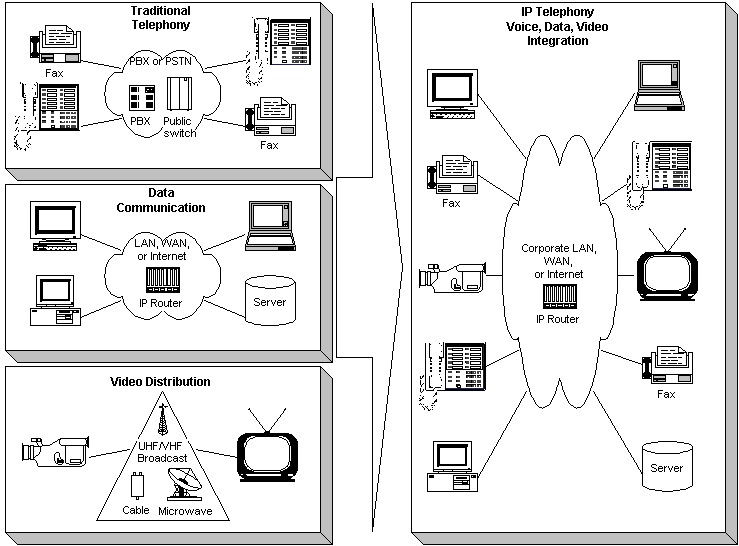
[This is preliminary documentation and subject to change.]
IP Telephony is an emerging set of technologies that enables voice, data, and video collaboration over existing IP-based LANs, WANs, and the Internet.
Specifically, IP Telephony uses open IETF and ITU standards to move multimedia traffic over any network that uses IP (the Internet Protocol)—offering users both flexibility in physical media (for example, POTS lines, ADSL, ISDN, leased lines, coaxial cable, satellite, and twisted pair) and flexibility of physical location. As a result, the same ubiquitous networks that carry Web, e-mail and data traffic can be used to connect to individuals, businesses, schools and governments worldwide.
TAPI 3.0 is an evolutionary API that supports convergence of both traditional PSTN telephony and telephony over IP networks.
IP Telephony allows organizations and individuals to lower the costs of existing services, such as voice and broadcast video, while at the same time broadening their means of communication to include modern video conferencing, application sharing, and whiteboarding tools.
In the past, organizations have deployed separate networks to handle traditional voice, data, and video traffic. Each with different transport requirements, these networks were expensive to install, maintain, and reconfigure. Furthermore, since these networks were physically distinct, integration was difficult if not impossible, limiting their potential usefulness.
IP Telephony blends voice, video and data by specifying a common transport, IP, for each, effectively collapsing three networks into one. The result is increased manageability, lower support costs, a new breed of collaboration tools, and increased productivity.
Possible applications for IP Telephony include telecommuting, real-time document collaboration, distance learning, employee training, video conferencing, video mail, and video on demand.
